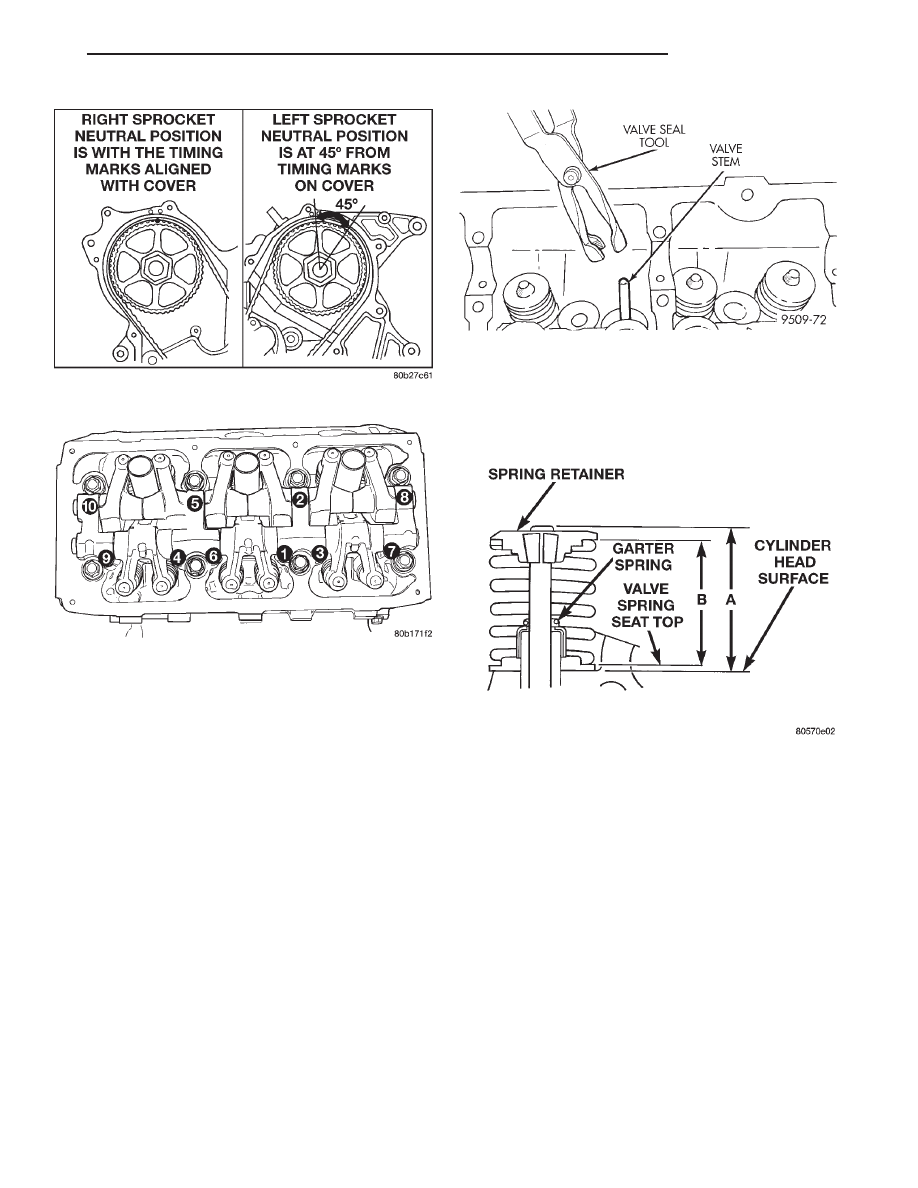Chrysler New Yorker. Manual - part 223

(4) Remove Intake Manifold. Refer to Group 11,
Exhaust System and Intake Manifold for removal
procedure.
(5) Remove cylinder head covers and spark plugs.
Refer to this section for procedure.
(6) Remove rocker arm and shaft assembly. Refer
to this section for procedure.
(7) Rotate the crankshaft clockwise, until the num-
ber 1 piston is at TDC (Top Dead Center) on the com-
pression stroke.
(8) With air hose attached to spark plug adapter
installed in number 1 spark plug hole, apply 620.5 to
689 kPa (90 to 100 psi) air pressure. This is to hold
valves into place while servicing components.
(9) Using Tool MD 998772A with adapter 6527 or
equivalent, compress valve spring and remove valve
locks, retainer, and valve spring.
(10) Remove valve stem seals by using a valve
stem seal tool (Fig. 60).
(11) The valve stem seal/valve spring seat should
be pushed firmly and squarely over the valve guide
using the valve stem as guide. Do Not Force seal
against top of guide. When installing the valve
retainer locks, compress the spring only enough to
install the locks.
CAUTION: Do not remove garter spring around the
seal at the top of the valve stem seal (Fig. 61).
(12) Follow the same procedure on the remaining 5
cylinders using the firing sequence 1-2-3-4-5-6. Make
sure piston in cylinder is at TDC on the valve
spring that is being covered.
(13) Remove spark plug adapter tool.
(14) Remove Special Tool MD 998772A and install
rocker arm assembly. Refer to procedure outlined in
this section.
(15) Install cylinder head covers. Refer to proce-
dure outline in this section.
(16) Install ignition coils and connect all electrical
connectors.
(17) Install intake manifold plenum. Refer to
Group 11, Exhaust System and Intake Manifold.
(18) Connect negative cable.
Fig. 58 Camshaft Sprockets Neutral Position
Fig. 59 Rocker Arm and Shaft Assembly Tightening
Sequence
Fig. 60 Valve Stem Seal—Removal
Fig. 61 Valve Seal Garter Spring
LH
3.2L ENGINE
9 - 87
REMOVAL AND INSTALLATION (Continued)